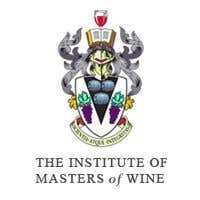Read it and weep, folks [and remember that questions can look deceptively simple; the examiners are looking for extremely detailed answers with lots of examples – JR]. And see yesterday's details of the practical (tasting) exams.
Below follows the MW exam I sat last week. True masochists can download it as a pdf here. I can't tell you what questions I answered – but feel free to start a discussion below to share your own thoughts. To find out more about my experience, read Diary of an MW student – part 26, the exam!
PAPER 1 – The Production of Wine Part 1 – Tuesday 7th June 2011 (3 hours)
THREE questions to be answered, ONE from Section A and TWO from Section B
Section A
1. What are the vineyard factors that influence the choice of rootstocks?
2. Examine the differences between phenolic and physiological ripeness and their impact on winemaking.
Section B
3. Compare and contrast the advantages and disadvantages of organic and non-organic viticulture.
4. Explain the different styles of wine that can be made from Chardonnay and Semillon grapes and examine how the winemaker may influence them.
5. What are the options available for the control of acidity in musts and wines from selecting the date of harvest to the end of the malolactic conversion?
6. Explain recent changes in the uses of Sulphur and Sulphur Dioxide in the vineyard and cellar prior to the completion of the malolactic conversion.
PAPER 2 – The Production of Wine Part 2 – Wednesday 8th June 2011 (3 hours)
THREE questions to be answered, ONE from Section A and TWO from Section B
1. In order of priority, what quality assurance procedures should a producer have in place to avoid contaminated or defective wine?
2. What factors should influence the choice of a wine’s closure?
Section B
3. What filtration techniques are available to the winemaker after malolactic conversion and before bottling? When and how might each of them be employed?
4. Drawing on examples from around the world, demonstrate how a fortified wine’s style is influenced by its production methods.
5. How do scale and costs influence choices in the use of oak in the maturation of wine?
6. Critically assess the use of yeast lees in the maturation of both still and sparkling wines.
PAPER 3 – The Business of Wine – Thursday 9th June 2011 (3 hours)
THREE questions to be answered, ONE from Section A and TWO from Section B
Section A
1. Using examples from all parts of the value chain, examine whether “green pays”.
2. Examine the advantages and disadvantages of remaining a small wine estate.
Section B
3. Volume or profit? Examine the options facing multi-national wine companies.
4. Using examples from around the world, outline a marketing strategy for a global wine brand to be sold into hotels and restaurants.
5. Examine the extent to which the concept of terroir should influence the position and market for a premium wine.
6. How can the internet influence the success (or failure) of a wine brand?
PAPER 4 – Contemporary Issues – Friday 10th June 2011 (3 hours)
TWO questions to be answered.
1. How important is the influence of wine journalism in today’s media? 2. Is Wine principally an Art or a Science?
3. Can vineyards and wineries ever truly be biodiverse and sustainable?
4. “Wine from long habit has become an indispensable for my health” (Thomas Jefferson). Examine the extent to which views about the health benefits of wine have changed away from Jefferson’s habit in the 21st century.
5. Some say the majority of wine consumers enjoy wine without understanding it. How will this shape the future of the international wine trade?

